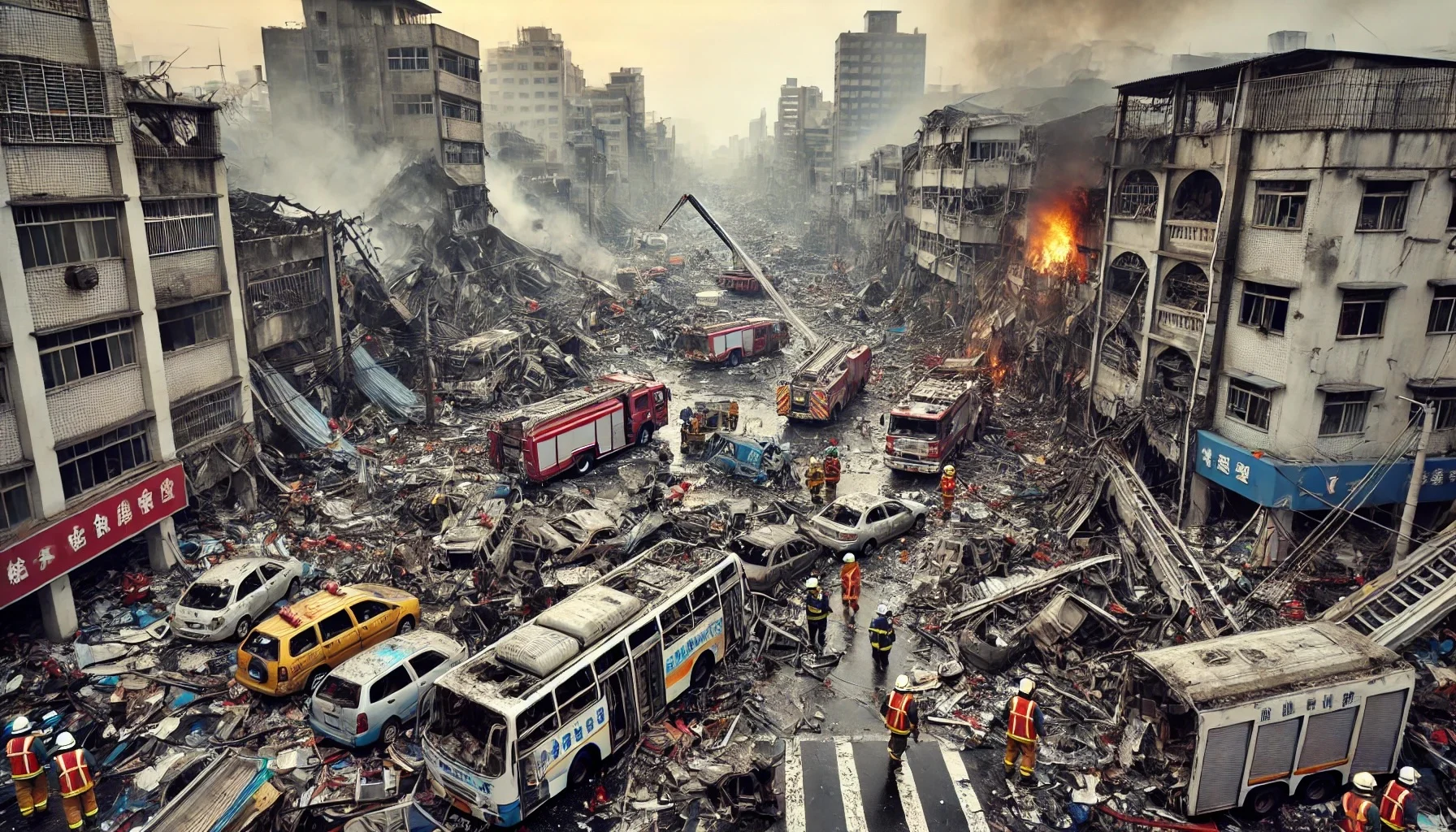
The Kaohsiung Gas Explosions
by: The Calamity Calendar Team
July 31, 2014
Body:
A Peaceful Night Shattered
Kaohsiung, a vibrant metropolis and industrial hub in southern Taiwan, was enjoying a typical summer evening on July 31, 2014. As the sun set, residents in the Cianjhen and Lingya districts began to notice an unusual and increasingly strong smell of gas. Calls to emergency services started pouring in around 8:46 PM, with concerned citizens reporting the odor. The city’s extensive underground pipeline network, vital for transporting gases used in various industries, had shown no immediate signs of malfunction.
The Calm Before the Storm
By 9:00 PM, firefighters and emergency personnel were dispatched to investigate the gas leaks. The source remained elusive despite their efforts, leaving a sense of unease hanging in the air. As residents went about their evening routines, the true extent of the danger lurking beneath their feet was still unknown.
The Night Erupts in Flames
Thanks for subscribing!
At 11:57 PM, the first explosion shattered the stillness of the night. The ground shook violently as a massive fireball erupted, sending plumes of smoke and debris skyward. The initial blast was followed by a series of explosions that continued for about 40 minutes, each one compounding the devastation. Streets were torn apart, buildings crumbled, and cars were overturned by the sheer force of the blasts.
Chaos and Rescue
The early hours of August 1, 2014, were a scene of chaos and heroism. Emergency response teams worked tirelessly through the night to rescue victims trapped in the rubble, control the raging fires, and assess the extent of the damage. Hospitals in the area were on high alert, treating the injured and providing care for those affected by the disaster.
The Aftermath
The explosions left a trail of destruction in their wake. Kilometers of roadways were destroyed, and numerous buildings were either heavily damaged or reduced to ruins. The estimated property damage reached approximately NT$1.9 billion (US$63 million). Tragically, the disaster claimed 32 lives and left 321 people injured. The economic impact was significant, particularly for industries reliant on the damaged gas pipelines. The incident prompted immediate discussions about the safety and management of industrial pipelines.
Investigating the Cause
In the wake of the tragedy, the Taiwanese government launched a thorough investigation to determine the cause of the explosions. It was soon discovered that the source of the disaster was a propylene leak from a corroded underground pipeline. The pipeline, owned by LCY Chemical Corporation, had failed due to inadequate maintenance, leading to the catastrophic release of the highly flammable gas.
Response and Recovery
The response to the disaster was swift and comprehensive. Emergency services, including firefighters, police, and military personnel, conducted extensive rescue operations and provided medical assistance. The government initiated legal proceedings against LCY Chemical Corporation and several government officials for negligence. LCY Chemical Corporation was held accountable for the maintenance failures that led to the leak, facing both legal and financial repercussions.
Transforming Safety Standards
In response to the disaster, Taiwan’s government implemented stricter regulations on industrial pipelines. Enhanced monitoring systems were put in place, and emergency response protocols were significantly improved to prevent similar incidents in the future. Continuous efforts are being made to improve pipeline safety, including regular inspections, maintenance, and infrastructure upgrades. Public awareness campaigns have also been launched to educate citizens on reporting gas leaks and ensuring community safety.
A Legacy of Change
The Kaohsiung gas explosions were a tragic reminder of the vulnerabilities inherent in industrial infrastructure. The disaster prompted a profound transformation in how such infrastructure is managed and maintained in Taiwan. The memory of that fateful night serves as a catalyst for ongoing improvements in safety standards, ensuring that the lessons learned from this tragedy continue to shape a safer future for all.
Stay in the Loop!
Become a Calamity Insider and get exclusive Calamity Calendar updates delivered straight to your inbox.
Thanks! You're now subscribed.